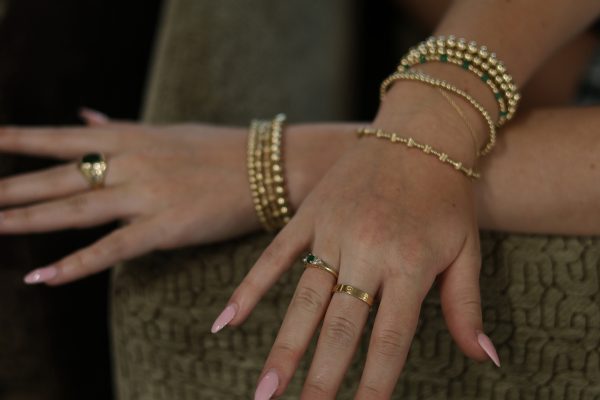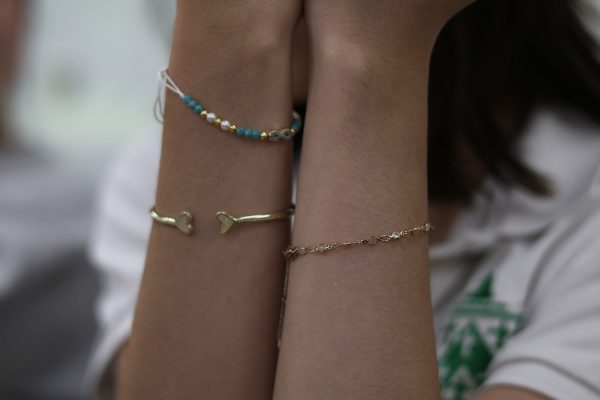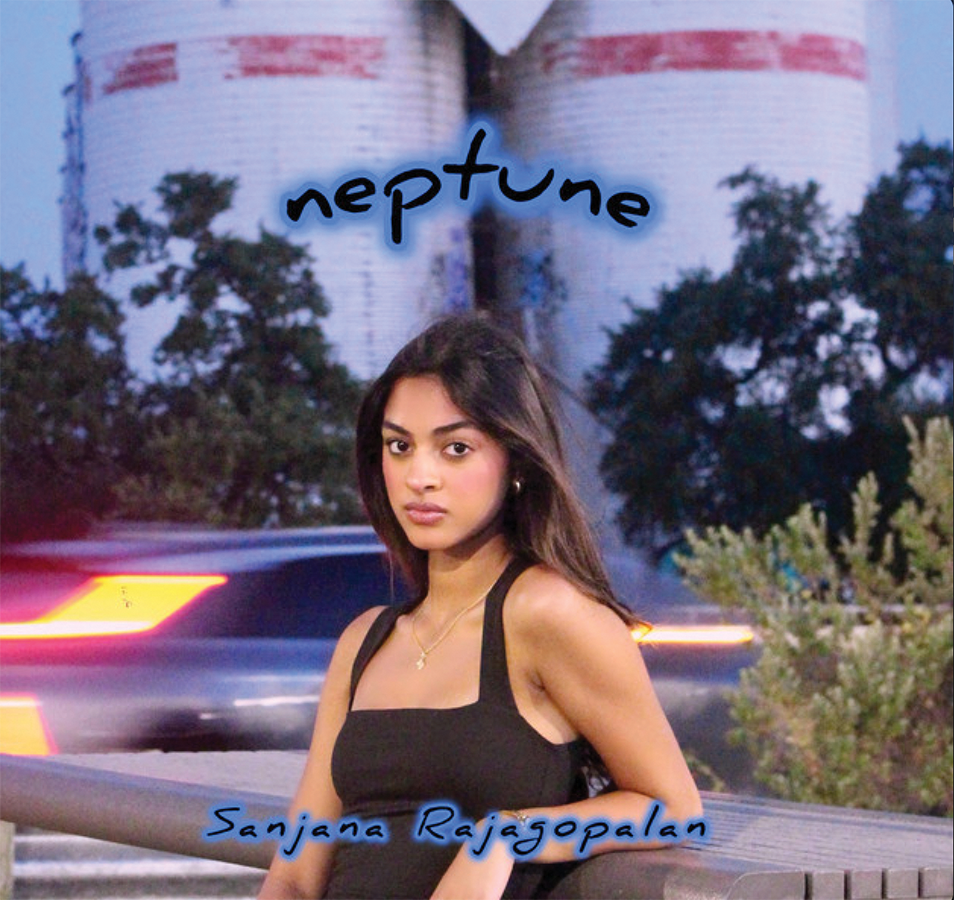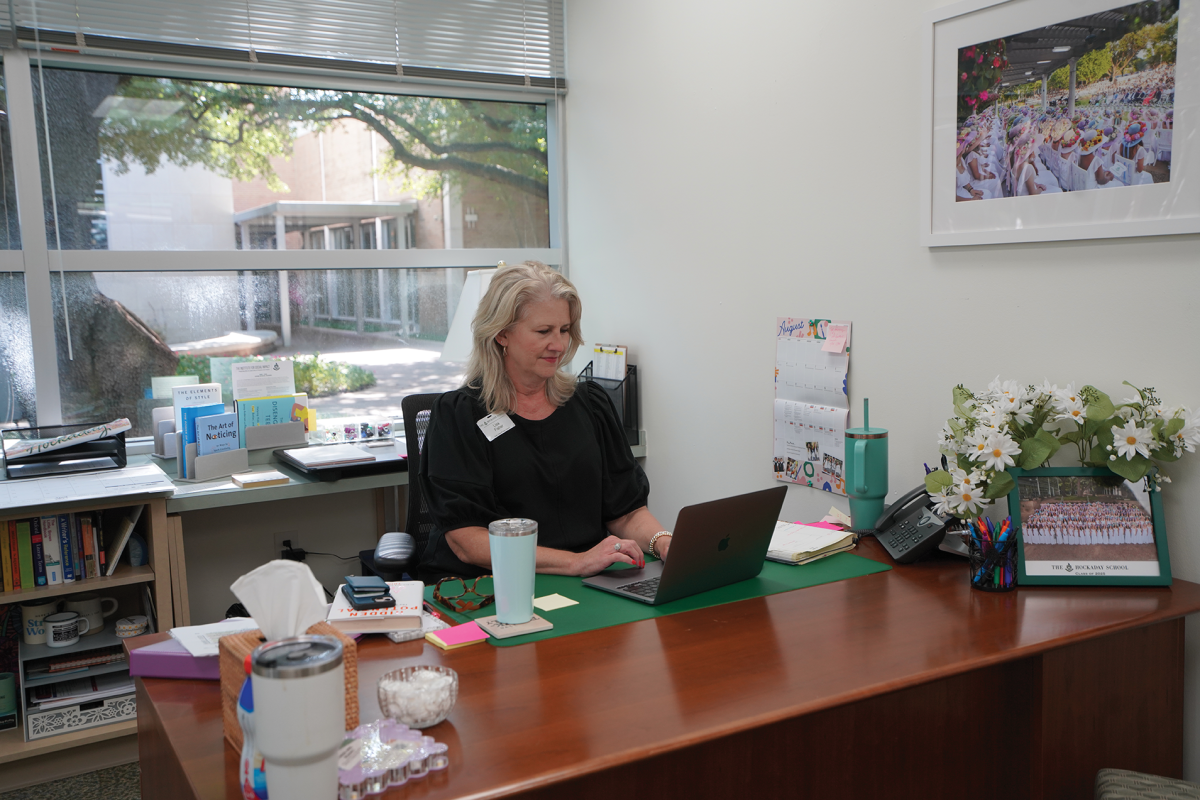Gold or silver? Rings or necklaces? Whether your style is dainty and minimalist or loud and colorful, jewelry is likely a key part of your self-expression.
“I love how jewelry gives your clothes personality and a personal touch,” sophomore Athena Wen said. “Jewelry makes any basic outfit look good.”
Why are certain gems more commonly used than others? What is the difference between 14-karat and 18-karat gold? Do you consider the science behind the piece?
Caroline Im, director of Gems and Minerals at the Perot Museum of Nature and Science, explains that a gem is a mineral that has been cut and polished. Some minerals are too soft to hold up as gems. Additionally, some minerals are more difficult to cut into gems than others.

“You have to pick a mineral that’s able to withstand everyday wear,” Im said. “There has to be enough of it to sustain the jewelry market. And thirdly, there has to be marketing behind it, so people know what you’re talking about.”
The Mohs Hardness Scale ranks minerals on a scale of 1 to 10, with 1 being the softest and 10 being the hardest, on their scratch resistance. A mineral should have a hardness high enough to resist scratches from everyday objects, such as fingernails and steel keys, if it is made into a gem.
Diamonds, the hardest naturally occurring substance, define the top of the scale at 10.
“[Before diamonds became popular in the 1940s for engagement rings], more commonly used gems were sapphires, emeralds, and rubies,” Im said.
In addition to their vibrant colors, these gems were what was known and readily available.
The second factor that determines if a mineral is suitable to become a gem is whether it has cleavage, which refers to the point at which its crystal structures connect and split when subjected to force. The bonds between atoms are weaker there, which makes it easier for the mineral to break along those planes. Cleavage is not desirable because accidentally hitting a cleavage plane could split a gem.
“A cleavage plane is like when you break Legos apart,” Im said. “It would break along the line where the brick ends and not in the middle.”

The mineral is made of microscopic crystal structures, Im explained. These small structures repeat in all directions to form a bigger crystal. Crystal structures can be complex or simple. When the crystal breaks, its pieces will always maintain the same structure, even if the shape of the pieces are different.
“Let’s say that you have salt. Sodium chloride is always attached to each other in a cubic arrangement. It’s always going to break that way,” Im said. “At the very basic crystal structure, it doesn’t make sense for it to break at an angle that is not 90 degrees, because that’s the way the bond forms at an atomic level.”
A fracture occurs when a mineral breaks unevenly, compared to the clean break of a cleavage plane. This can happen if a mineral has fracture, which most, but not all, do. A gem may fracture or splinter when hit along a fracture.
Fracture, although sometimes unpredictable, is preferable to cleavage when in gem cutting. Cleavage has a much higher chance of splitting a gem along a plane, which could ruin the stone and alter its size. Minerals with cleavage can also be less durable than those without.
“Different sides of the [crystal] structure can have fractures and others cleavage. So, if a mineral has four planes, you can have three planes of cleavage and one plane of fracture,” Im said.
Paige Furr, Upper School Ceramics and Sculpture teacher began creating jewelry when she was a sophomore in high school.
“I learned how to solder, how to cut with the jeweler saw, how to pierce, how to bend metal, and how to clean it up,” Furr said.
After becoming an educator, Furr signed up for various jewelry workshops and created her own jewelry toolbox.
“When I came to [Hockaday], I thought I would introduce small metals, or jewelry, to the ceramics program,” Furr said. “We’ve been gradually bringing in different tools and starting off the students this year with small metals.”
She has introduced jewelry making into the intermediate ceramics program.
Have you ever had a ring turn your finger green? If so, you aren’t alone. One universal experience for jewelry wearers is low quality jewelry turning their skin green.
Most metal alloys in jewelry contain copper. When copper reacts with oxygen or moisture, it creates a compound called copper oxide. The reaction creates a greenish film on top of the copper, which then rubs off onto the skin, Furr explained.
“Your body produces specific sweat, and depending on your body chemistry, some people are more acidic than others,” Furr said. “The acidity in the sweat, the salt, causes the copper to start to oxidize, and in the process of oxidizing it turns green, from red to green.”

Furr explained jewelry that is higher quality, such as gold with higher carats, contains a lower ratio of copper to gold. Because gold does not oxidize, these higher quality jewelry pieces are less likely to turn skin green.
However, lower quality jewelry can also be prevented from turning skin green with a simple hack: paint a coat of clear nail polish to your jewelry to stop the metal from oxidizing.
Wen believes that understanding the science behind jewelry is extremely helpful when shopping for new pieces.
“When you are buying jewelry online, you can understand if the jewelry is high quality,” Wen said. “Sometimes, you might have bad reactions to poor quality jewelry, and so by understanding the science behind jewelry, you can keep yourself safe.”







